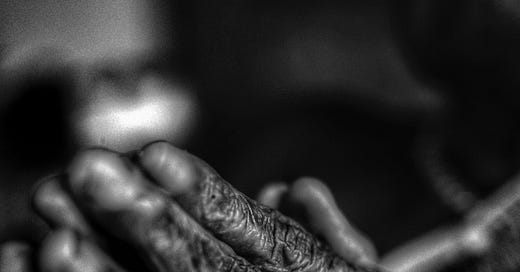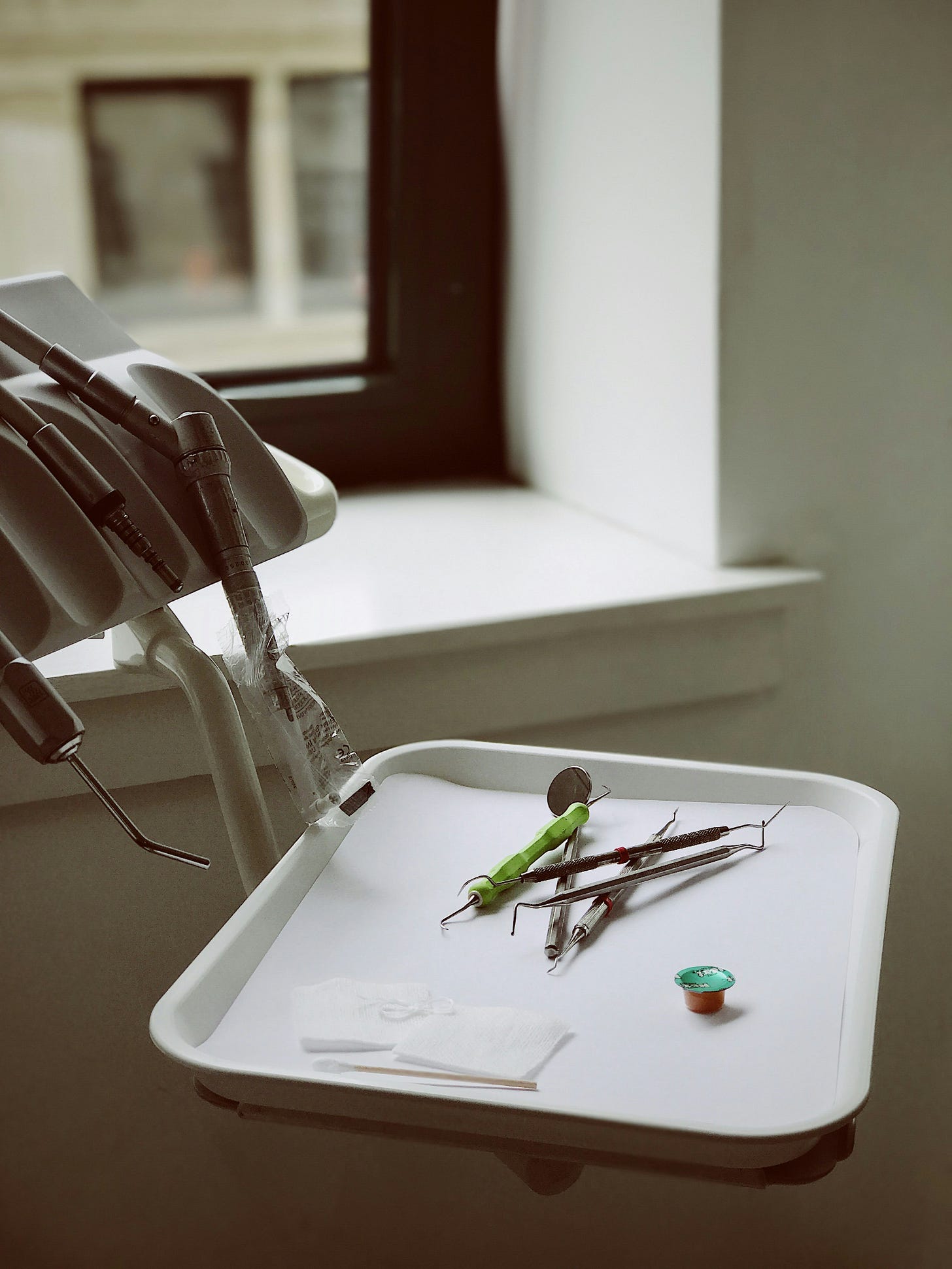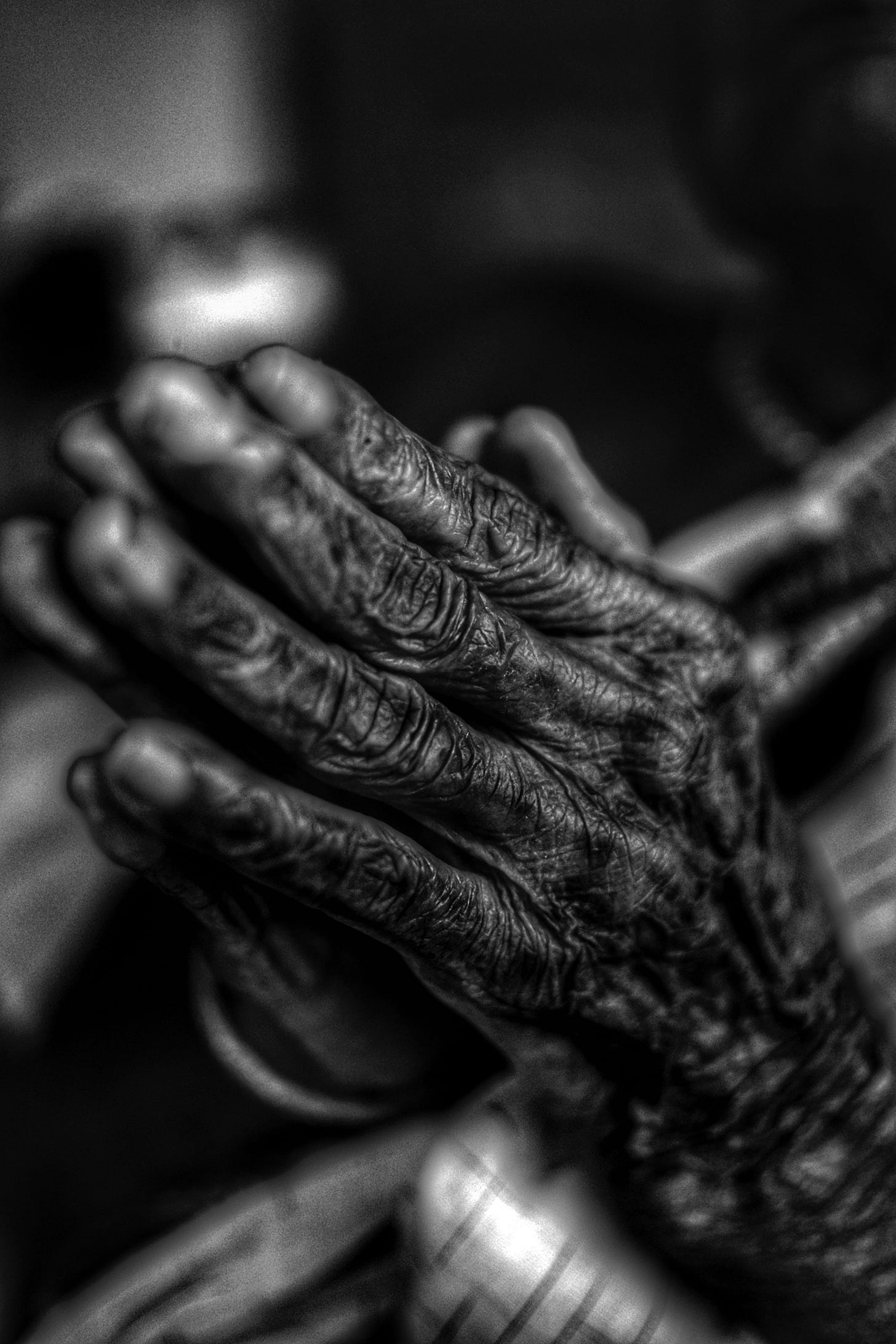I’m seated in the reclined dental chair while the round and piercing light glares. The dentist produces instruments that drill and whir in my mouth. My body is tense—I’m clenching my fists and tightening my legs. The assistant shifts from one side of the room to the other like a wizard mixing potions, preparing things I don’t understand. A nerve pain shoots through me, and I raise my left hand to signal pain. They’re not finished yet, and the anaesthesia has already worn off. A second shot. After the needle’s sharp prick, I take a deep breath and consciously relax my body. The drilling continues, but I also continue with a secret survival tactic: the Jesus prayer.
In the last two years, I’ve been to the dentist a lot. At a dental practice to which I no longer belong, the dentist gave me two root canals. Both took multiple hours and both did not resolve the underlying pain. I went to an endodontist (root canal specialist) afterward to consult. His x-rays and otherwise kind demeanor relayed the bad news that both would need to be redone. More piercing light. More drilling. More tensing and tightening. And, well, more praying.
This praying is not pious; it’s desperate. I repeat the Jesus prayer: “Jesus Christ, Son of the Living God, have mercy on me, a sinner.” Sometimes, given the Reformed theology of “total depravity” that impacted me in my youth, I theologically squabble with the sinner part. Sure, I’m a sinner, I’ll readily admit to God—but I also bear the divine image. Why dwell on the negative? But when I’m seated in the dental chair, there’s something about naming myself as a sinner that matches the desperation I feel. It’s a cry for help, and damn it, I need help!
The Jesus prayer is a Christian form of mantra practice, an ancient way of praying first developed by desert monks in Egypt and Syria in the fourth century. I first heard about this prayer as an evangelical Christian English major reading J.D. Salinger’s Franny and Zooey. Franny, overwhelmed by the superficiality of the world, faces an existential crisis and turns for wisdom to the Russian spiritual classic The Way of a Pilgrim. It’s a tale of a contemplative seeker who walks across Russia learning and reciting the Jesus Prayer and experiences a powerful awakening. The Jesus Prayer is a practice anyone can do, the pilgrim says, and “It costs nothing but the effort to sink down in silence into the depths of one’s heart and call more and more upon the radiant Name of Jesus.”
The fourth-century desert monks sought to fulfill the apostle Paul’s admonition to “pray always” (1 Thess. 5:17). They recommended saying the name of Jesus, continual short prayer phrases, or cries from the heart to God throughout the day. Eventually various monks formed the prayer into further technique, advising certain postures and breathing patterns to go along with the prayer phrase “Jesus Christ, Son of the Living God, have mercy on me, a sinner.” Gazing at your navel while breathing and saying the prayer, one said, helps place “the mind in the heart”—that integrated, Eastern Orthodox vision of praying with our whole being.
To be honest, I mostly forget about saying the Jesus prayer until I find myself in desperate situations like sitting in a dental chair and pleading for divine mercy. The prayer is there when I need it, though, and it helps my heart focus and body relax. But the authentic practice is intended for one’s life and much more than fear-filled moments. The prayer is to be continued throughout the moments of one’s day, with the eventual goal of perpetual, heartfelt intimacy with God. As I write this, I can’t help but wonder: What would happen if we, like those desert monks, and like the 19th century Russian pilgrim, became serious about praying the radiant Name of Jesus?
If you have experiences with the Jesus Prayer (or the dental chair) that you care to share, please feel free to comment below. I love to hear from you.
P.S. You’ll notice the option below to leave a pledge for the future when this newsletter transitions to the tiered paid subscription model. I’d be grateful if you considered—this will also help me plan for potential podcasting equipment :)
Photo credit: Praying hands photo by Om Prakash Sethia on Unsplash






I’m grateful for your sharing about the Jesus Prayer. I’ll share a personal reflection from the opposite side of the dental chair.
I work as a pediatric dentist and fully recognize the difficulty of the experience for most patients, regardless of their age.
I know that I, and many of my colleagues, feel great pressure during these appointments - always hoping for a comfortable and healing outcome.
I pray the Jesus Prayer throughout the majority of my workday, it’s been a powerful vehicle for grace in the midst of the day’s challenges.
So, whether you’re a patient or a provider, dentistry is pretty darn stressful and a strong catalyst for working with the Jesus Prayer!
My dear Mark, I resonate with your dental woes, as I have spent an inordinate amount of time in the dental chair in the last 14 or 15 months. I was going to lose an extraordinarily generous insurance 3 years after Philip's death and opted to have everything I could done before it lapsed. Anyway, I cannot tell you the lengths to which I went - the incantations, the mantras, the prayers I sent heavenward, the visualizations, etc. that I invoked to help me get through 5 root canals, 7 crowns (or was it 9?), an implant and God knows what else I endured. Headphones, meditation, oh, my. What an ordeal!